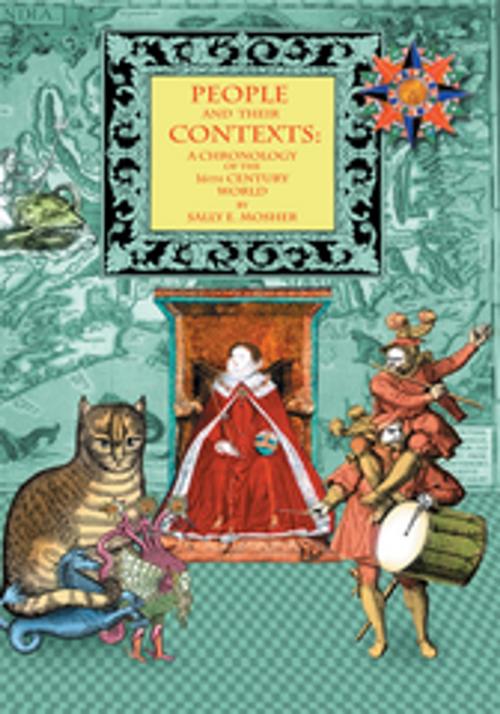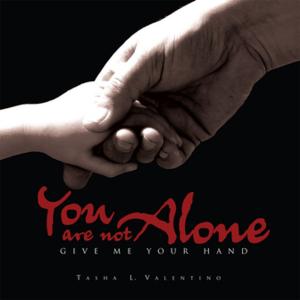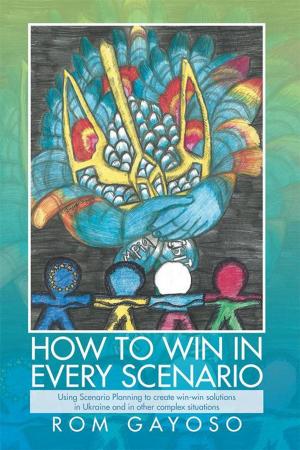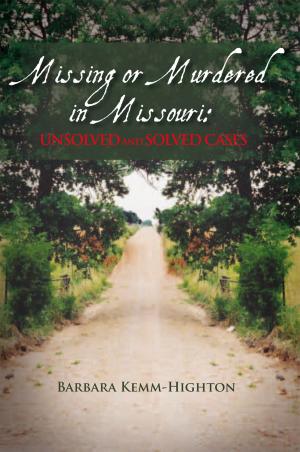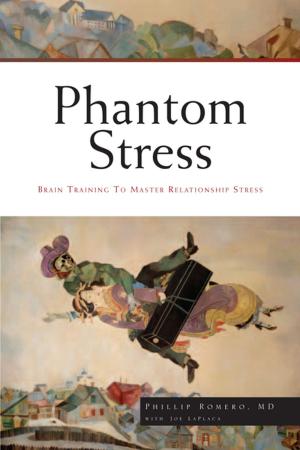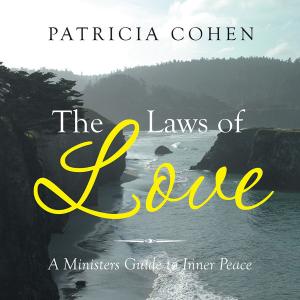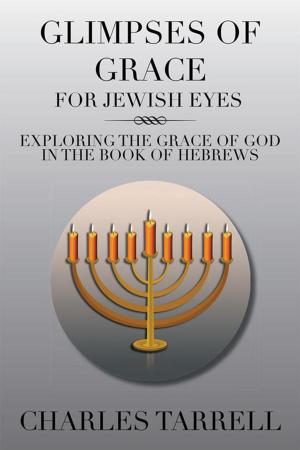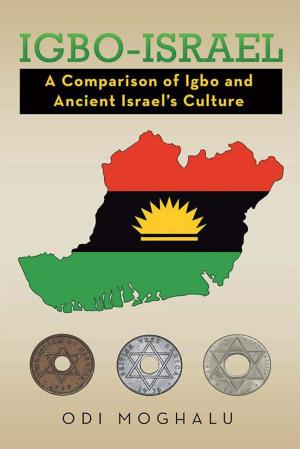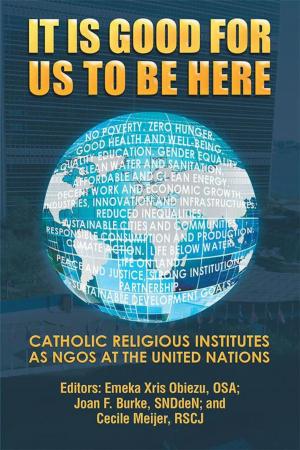| Author: | Sally E. Mosher | ISBN: | 9781465324672 |
| Publisher: | Xlibris US | Publication: | June 4, 2002 |
| Imprint: | Xlibris US | Language: | English |
| Author: | Sally E. Mosher |
| ISBN: | 9781465324672 |
| Publisher: | Xlibris US |
| Publication: | June 4, 2002 |
| Imprint: | Xlibris US |
| Language: | English |
This chronology was begun to fill my own needs. While preparing lectures and articles on Renaissance music, I sought general information on the period in order to place specific events in their context. I had already done considerable reading on 16th century subjects, but it had been specialized rather than general. Looking at existing chronologies, I found events listed in bullet format as one-liners with no explanation of names or terminology. The alternative was full-length books on the period, most of them extremely detailed and scholarly in tone. What I wanted was a cultural outline, with each entry self-explanatory, and containing as much information as possible about how people lived. Thus, I began to compile this cultural outline, and found the process so interesting that it continued to grow.
In its present form, the chronology is a convenient vade mecum for people either generally interested in the period or researching a specific aspect of it, and it can serve any reader as an introduction to this extraordinarily vivid age. It is not intended as a substitute for scholarly texts, but rather may be a launching pad for subsequent in-depth reading in them.
Throughout the 16th century, the Western world was beginning its rise to world dominance. Westerners have usually thought of the 16th century world as Euro-centered because we have relied on general histories written from the vantage point of the West, that havent included much beyond Europe and its doings. The escalation of Western dominance during the following four centuries was powered by advances in technology, spurred by insatiable curiosity, and morally undermined by a patronizing, sometimes truculent, belief in the superiority of Western civilization, race, and religion.
The reality is that a number of the civilizations encountered by the exploring, conquering 16th century Europeans deserved to be considered great. Some, indeed, considered themselves superior to the Europeans. However, the Europeans prevailed, and they wrote the books. Included in this chronology are significant people, events and achievements from the non-European world, including arguably the most enlightened monarch of the century, Akbar the Great, Mughal Emperor of India, who practiced religious toleration, reduced taxes and abolished slavery.
The 16th century was a time of discoveries; of firsts and the setting of precedents; of challenges to established paradigms in geography, religion and astronomy; of beauty juxtaposed with brutality and danger. Every year, a war was happening somewhere. Promises and treaties were made, and quickly abandoned as alliances shifted. The Pope was a political as well as a spiritual force, making treaties and sending armies into the field just like any other ruler. The Turks were a serious threat to Europe for the first seventy years of the century; in 1529 they laid unsuccessful siege to Vienna. The cities of Rome and Antwerp were both sacked by European armies. London suffered a serious earthquake, and Constantinople (now Istanbul) was destroyed by one. Moscow was destroyed by fire. Jews in most places and Muslims living in Spain (known to history as Moors) were persecuted. Torture was generally acceptable to both church and state, as was slavery. Under both Catholics and Protestants, witches were persecuted when witch-hunting crazes erupted sporadically throughout Europe.
If the 16th century was notably the century of geography as the world was encompassed by four circumnavigations, as mapmakers enlarged people's knowledge of the earth's vastness and shape, as navigators ventured onto vast, hitherto uncharted bodies of water so also was it notably the century of religion. At the century's beginning, Europe was Catholic, and Christians dominated the Western world. At the century's end, many Protestant sects had gained important footholds all over Europe and a few countries could be considered e
This chronology was begun to fill my own needs. While preparing lectures and articles on Renaissance music, I sought general information on the period in order to place specific events in their context. I had already done considerable reading on 16th century subjects, but it had been specialized rather than general. Looking at existing chronologies, I found events listed in bullet format as one-liners with no explanation of names or terminology. The alternative was full-length books on the period, most of them extremely detailed and scholarly in tone. What I wanted was a cultural outline, with each entry self-explanatory, and containing as much information as possible about how people lived. Thus, I began to compile this cultural outline, and found the process so interesting that it continued to grow.
In its present form, the chronology is a convenient vade mecum for people either generally interested in the period or researching a specific aspect of it, and it can serve any reader as an introduction to this extraordinarily vivid age. It is not intended as a substitute for scholarly texts, but rather may be a launching pad for subsequent in-depth reading in them.
Throughout the 16th century, the Western world was beginning its rise to world dominance. Westerners have usually thought of the 16th century world as Euro-centered because we have relied on general histories written from the vantage point of the West, that havent included much beyond Europe and its doings. The escalation of Western dominance during the following four centuries was powered by advances in technology, spurred by insatiable curiosity, and morally undermined by a patronizing, sometimes truculent, belief in the superiority of Western civilization, race, and religion.
The reality is that a number of the civilizations encountered by the exploring, conquering 16th century Europeans deserved to be considered great. Some, indeed, considered themselves superior to the Europeans. However, the Europeans prevailed, and they wrote the books. Included in this chronology are significant people, events and achievements from the non-European world, including arguably the most enlightened monarch of the century, Akbar the Great, Mughal Emperor of India, who practiced religious toleration, reduced taxes and abolished slavery.
The 16th century was a time of discoveries; of firsts and the setting of precedents; of challenges to established paradigms in geography, religion and astronomy; of beauty juxtaposed with brutality and danger. Every year, a war was happening somewhere. Promises and treaties were made, and quickly abandoned as alliances shifted. The Pope was a political as well as a spiritual force, making treaties and sending armies into the field just like any other ruler. The Turks were a serious threat to Europe for the first seventy years of the century; in 1529 they laid unsuccessful siege to Vienna. The cities of Rome and Antwerp were both sacked by European armies. London suffered a serious earthquake, and Constantinople (now Istanbul) was destroyed by one. Moscow was destroyed by fire. Jews in most places and Muslims living in Spain (known to history as Moors) were persecuted. Torture was generally acceptable to both church and state, as was slavery. Under both Catholics and Protestants, witches were persecuted when witch-hunting crazes erupted sporadically throughout Europe.
If the 16th century was notably the century of geography as the world was encompassed by four circumnavigations, as mapmakers enlarged people's knowledge of the earth's vastness and shape, as navigators ventured onto vast, hitherto uncharted bodies of water so also was it notably the century of religion. At the century's beginning, Europe was Catholic, and Christians dominated the Western world. At the century's end, many Protestant sects had gained important footholds all over Europe and a few countries could be considered e
